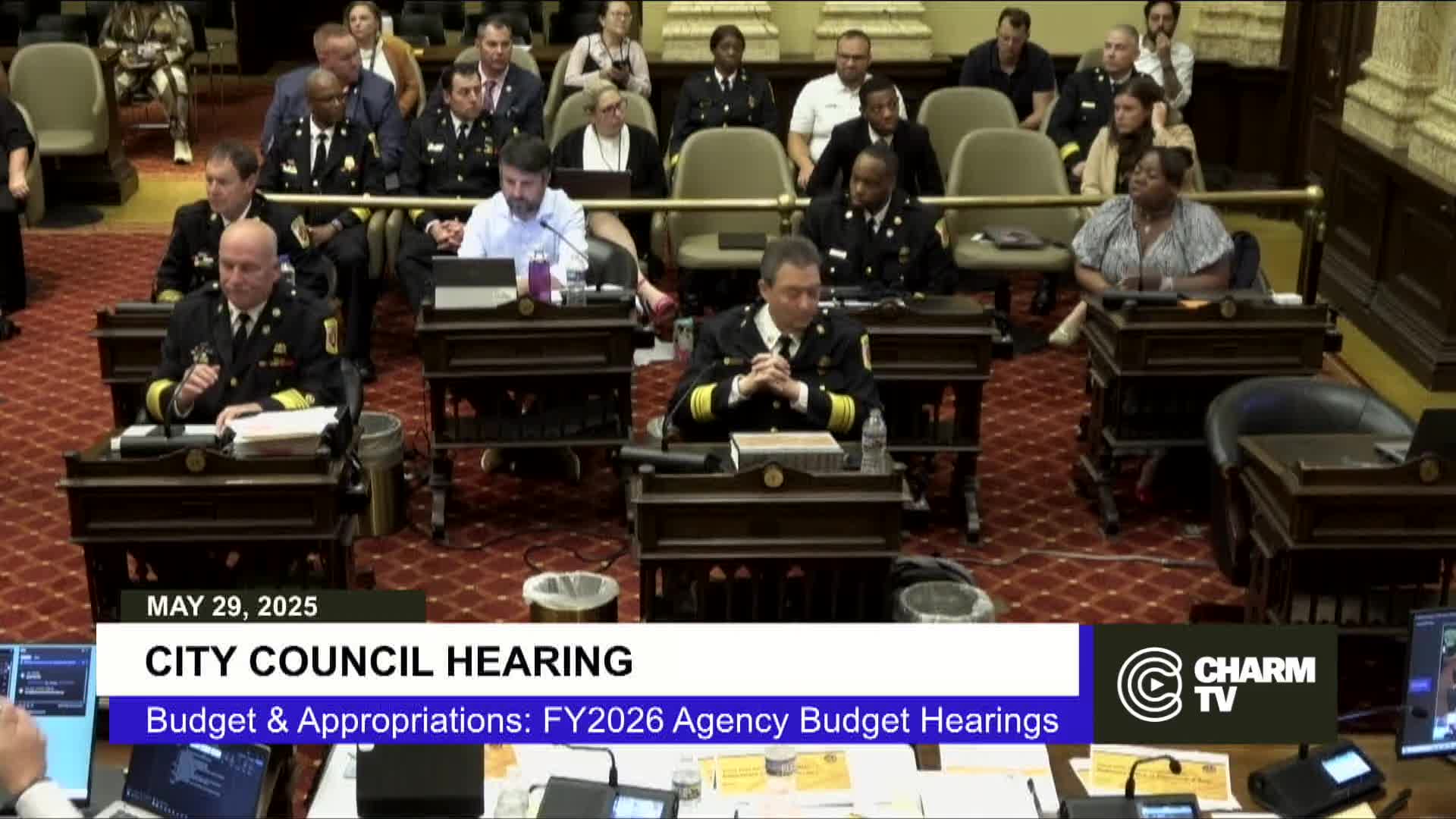Baltimore Fire Chief Wallace discusses new strategies for vacant property safety
May 30, 2025 | Baltimore City, Baltimore County, Maryland
This article was created by AI summarizing key points discussed. AI makes mistakes, so for full details and context, please refer to the video of the full meeting. Please report any errors so we can fix them. Report an error »

The City Council of Baltimore convened on May 29, 2025, to discuss the Fiscal Year 2026 budget, focusing on the Office of Emergency Management (OEM) and the Baltimore City Fire Department (BCFD). The meeting highlighted key initiatives aimed at improving community safety and addressing the challenges posed by vacant properties.
One significant topic was the collaboration between local schools and the BCFD to engage high school students in internships related to emergency management. This initiative aims to bridge language barriers within the community and enhance student involvement in public safety efforts. Council members expressed enthusiasm for this partnership, particularly between Patterson High School and Digital Harbor High School.
Chief Wallace of the BCFD presented data on fire incidents, noting that approximately 30% of fires occur in vacant or abandoned properties. He emphasized the importance of a new approach to managing these structures, which has led to an impressive 83% reduction in injuries related to fire incidents. The Chief detailed ongoing efforts to inspect and monitor vacant properties, including a proactive inspection schedule and a new reporting system for residents to alert the department about unsafe conditions.
The discussion also covered the implementation of a comprehensive policy to manage vacant properties effectively. Chief Wallace reported that the department has reached a plateau in identifying new vacant structures, with around 5,000 currently in the system. The focus is now on developing strategies to rehabilitate these properties safely and efficiently.
The meeting concluded with a commitment to continue collaboration between the BCFD and other agencies to enhance data sharing and improve safety protocols for firefighters. Council members expressed their support for these initiatives, recognizing the critical need for effective policies to protect both residents and emergency responders.
Overall, the City Council hearing underscored the ongoing efforts to address public safety challenges in Baltimore, particularly concerning vacant properties and community engagement through educational partnerships. The next steps will involve further development of policies and continued monitoring of fire incidents to ensure the safety of all residents.
One significant topic was the collaboration between local schools and the BCFD to engage high school students in internships related to emergency management. This initiative aims to bridge language barriers within the community and enhance student involvement in public safety efforts. Council members expressed enthusiasm for this partnership, particularly between Patterson High School and Digital Harbor High School.
Chief Wallace of the BCFD presented data on fire incidents, noting that approximately 30% of fires occur in vacant or abandoned properties. He emphasized the importance of a new approach to managing these structures, which has led to an impressive 83% reduction in injuries related to fire incidents. The Chief detailed ongoing efforts to inspect and monitor vacant properties, including a proactive inspection schedule and a new reporting system for residents to alert the department about unsafe conditions.
The discussion also covered the implementation of a comprehensive policy to manage vacant properties effectively. Chief Wallace reported that the department has reached a plateau in identifying new vacant structures, with around 5,000 currently in the system. The focus is now on developing strategies to rehabilitate these properties safely and efficiently.
The meeting concluded with a commitment to continue collaboration between the BCFD and other agencies to enhance data sharing and improve safety protocols for firefighters. Council members expressed their support for these initiatives, recognizing the critical need for effective policies to protect both residents and emergency responders.
Overall, the City Council hearing underscored the ongoing efforts to address public safety challenges in Baltimore, particularly concerning vacant properties and community engagement through educational partnerships. The next steps will involve further development of policies and continued monitoring of fire incidents to ensure the safety of all residents.
View full meeting
This article is based on a recent meeting—watch the full video and explore the complete transcript for deeper insights into the discussion.
View full meeting
